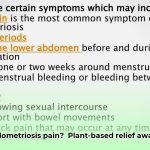Dealing with nagging back pain? You’re not the only one. Millions feel that familiar ache, constantly searching for ways to feel better. But what if a simple change to your diet could make a real difference? This guide isn’t about quick fixes; it’s about understanding how the food you eat impacts your back pain and giving you a clear plan to manage it naturally. We’ll explore delicious, anti-inflammatory foods – think salmon, blueberries, even turmeric – and show you how they can help reduce inflammation and ease discomfort. For more information on anti-inflammatory foods, check out this helpful resource: [more info](https://happilylive.com/anti-inflammatory-foods). We’ll cut through the jargon, offering practical advice and tips you can use right away, helping you take control of your back pain and feel better, naturally. Let’s get started on your journey to a healthier, happier back!
Anti-Inflammatory Food for Back Pain: A Delicious Path to Relief
Back pain? Ugh, we’ve all been there. That nagging ache, the stiffness, the limitations – it’s no fun. But what if I told you that a big part of the solution might already be in your kitchen? It’s true! The foods you eat can play a surprisingly powerful role in managing your back pain, especially by reducing inflammation. Let’s explore how anti-inflammatory foods can naturally ease your discomfort and get you moving more freely again.
Understanding the Inflammation-Pain Connection: Your Body’s Internal Response
Think of your body as a super-complex machine, constantly working to keep everything running smoothly. Inflammation is your body’s natural response to injury or irritation – it’s like the emergency alert system going off. Inflammation itself isn’t always the bad guy; it helps heal wounds. However, when it becomes chronic (long-lasting), it can lead to persistent pain, especially in your back. This prolonged inflammation can manifest as stiffness, swelling, and that familiar, dull ache that just won’t quit. This is where a carefully chosen diet comes in: by focusing on anti-inflammatory foods, you may help calm this internal “emergency” and ease your back pain. Dietary adjustments can drastically affect inflammation levels in the body, impacting pain perception and overall well-being. Choosing a diet rich in anti-inflammatory compounds can be a powerful tool in managing chronic back pain.
Your Anti-Inflammation Arsenal: Power Foods for Pain Relief
The good news? Many delicious and accessible foods have amazing anti-inflammatory superpowers. These aren’t miracle cures, but they can be significant players in your overall back pain management strategy.
1. Omega-3 Fatty Acids: The Peacemakers: Think of omega-3s as tiny peacekeepers inside your body, helping to de-escalate inflammatory flare-ups. These healthy fats, found abundantly in fatty fish (like salmon, tuna, mackerel, herring, and sardines), flaxseeds, chia seeds, and walnuts, can help reduce inflammation throughout your body, potentially easing back pain. Aim for at least two servings of fatty fish each week 1. Supplementing with fish oil is another convenient way to ensure adequate omega-3 intake, especially if you don’t consume fish regularly.
2. Antioxidants: The Bodyguards: Antioxidants are your body’s personal security detail, protecting cells from damage caused by free radicals (think of them as unstable molecules that cause cellular mayhem). Berries (think juicy blueberries, strawberries, raspberries, blackberries, and cranberries), dark leafy greens (kale, spinach, collard greens, Swiss chard, and arugula – load up!), and colorful vegetables (bell peppers – especially red and yellow, carrots, sweet potatoes, broccoli, and tomatoes) are packed with these protective compounds. What types of colorful fruits and vegetables are packed with antioxidants acting as bodyguards? Look for vibrant hues – the richer the color, the higher the antioxidant content. Consider adding antioxidant-rich spices like cloves, cinnamon, and oregano to your meals for an extra boost.
3. Vitamins and Minerals: The Building Blocks: Vitamins and minerals are the essential building blocks for a healthy body, and some play a vital role in bone health and inflammation control. Vitamin D (sunshine and fortified foods like milk and cereals are your friends!), magnesium (found in nuts, seeds, leafy greens, avocados, and dark chocolate), and vitamin K (abundant in leafy greens, broccoli, and Brussels sprouts) are especially important. A deficiency in these key nutrients can exacerbate inflammation and back pain. Consider getting your vitamin D levels checked, as many people are deficient, especially during winter months.
4. Turmeric and Ginger: The Culinary Superstars: These aren’t just delicious spices; they’re potent anti-inflammatory agents. Add them generously to your curries, stir-fries, soups, smoothies, or even your morning tea! Their vibrant flavors add a punch of health to your meals. Turmeric contains curcumin, a powerful anti-inflammatory compound. To enhance curcumin absorption, combine turmeric with black pepper. Fresh ginger is particularly potent, but powdered ginger also offers benefits.
5. Healthy Fats: The Lubricants: Incorporate healthy fats from sources like avocados, olive oil, nuts, and seeds into your diet. These fats help lubricate joints and reduce inflammation. Extra virgin olive oil contains oleocanthal, a compound with anti-inflammatory properties similar to ibuprofen.
Your Personalized Action Plan: A Step-by-Step Guide to Better Back Health
Ready to start nourishing your way to relief? Here’s a simple plan to integrate anti-inflammatory foods into your life:
Step 1: Gradually Increase the Goodness: Don’t overhaul your entire diet overnight. Start by gradually adding more anti-inflammatory foods to your daily meals. Aim for a diverse and colorful plate – variety is key! Aim for diverse colors to ensure you’re getting a broader spectrum of nutrients. Try adding a side of steamed spinach to your lunch, snacking on berries instead of chips, or swapping out your regular cooking oil for olive oil.
Step 2: Decrease the Inflammation-Boosters: Reduce your intake of processed foods, sugary drinks (soda, juice – go for water!), refined carbohydrates (white bread, pastries, and sugary cereals), red meat (lean protein like chicken and fish are your friends), and unhealthy fats (think fried foods and excessive amounts of butter or margarine). These can fuel inflammation and worsen your back pain. Processed foods often contain high levels of unhealthy fats, added sugars, and preservatives, all of which contribute to inflammation. Pay attention to food labels and choose options with lower sodium, sugar, and saturated fat content.
Step 3: Focus on Whole, Unprocessed Foods: Build your diet around whole, unprocessed foods: fruits, vegetables, lean proteins (chicken, fish, beans, lentils, tofu), and whole grains (brown rice, quinoa, oats, barley). These naturally provide the nutrients your body needs to thrive and combat inflammation. Shop the perimeter of the grocery store, where fresh produce and whole foods are typically located.
Step 4: Hydrate, Hydrate, Hydrate!: Water is essential for almost every bodily function, including managing inflammation. Aim for at least eight glasses of water a day. Staying adequately hydrated helps flush out toxins and supports overall cellular function. Carry a reusable water bottle with you to stay on track.
Step 5: Listen to Your Body’s Signals: Pay close attention to how different foods make you feel. Everyone’s body is unique; what works wonders for one person might not be ideal for another. Adjust your approach based on your own experience. How often should you pay attention to how different foods make you feel to see if it works for you? Keep a food journal to track your meals and any associated symptoms. This can help you identify trigger foods and tailor your diet accordingly.
Step 6: Mindful Eating: Practice mindful eating by paying attention to your hunger cues and savoring each bite. This can help you avoid overeating and make healthier food choices. Eat slowly and without distractions, focusing on the taste, texture, and aroma of your food.
Step 7: Regular Exercise: Combine your anti-inflammatory diet with regular exercise to further reduce inflammation and improve your overall health. Low-impact activities like walking, swimming, and yoga are particularly beneficial for back pain.
Step 8: Stress Management: Chronic stress can contribute to inflammation. Practice stress-reducing techniques like meditation, deep breathing exercises, or spending time in nature.
Step 9: Prioritize Sleep: Aim for 7-8 hours of quality sleep each night. Sleep deprivation can increase inflammation and worsen back pain.
Step 10: Seek Professional Guidance: If you’re unsure where to start or have specific concerns (especially if you’re on medication), consider consulting a registered dietitian or healthcare professional. They can create a personalized plan that fits your needs and addresses any potential interactions with your medications. It’s important to consult with a healthcare provider before making significant dietary changes, especially if you take medications. They can also help you rule out any underlying medical conditions that may be contributing to your back pain.
Addressing Your Questions: Frequently Asked Queries
Q: How long will it take to see results?
A: This varies significantly from person to person. Some people might notice a difference within a few weeks, while others may experience improvements over several months. Consistency is key; keep at it! Factors like the severity of your inflammation, your overall health, and your adherence to the diet will all influence the timeframe.
Q: Can this diet replace medication?
A: No, this diet should complement, not replace, any prescribed medication for your back pain. It’s about supporting your existing treatment plan, not replacing it. Always talk to
- Plant-based Diet Colitis Remission: Success Stories - December 18, 2025
- Plant Based Diet Breast Cancer: Research-Based Benefits - December 16, 2025
- Plant-Based Diet Ulcerative Colitis Remission: Proven Benefits - December 15, 2025










